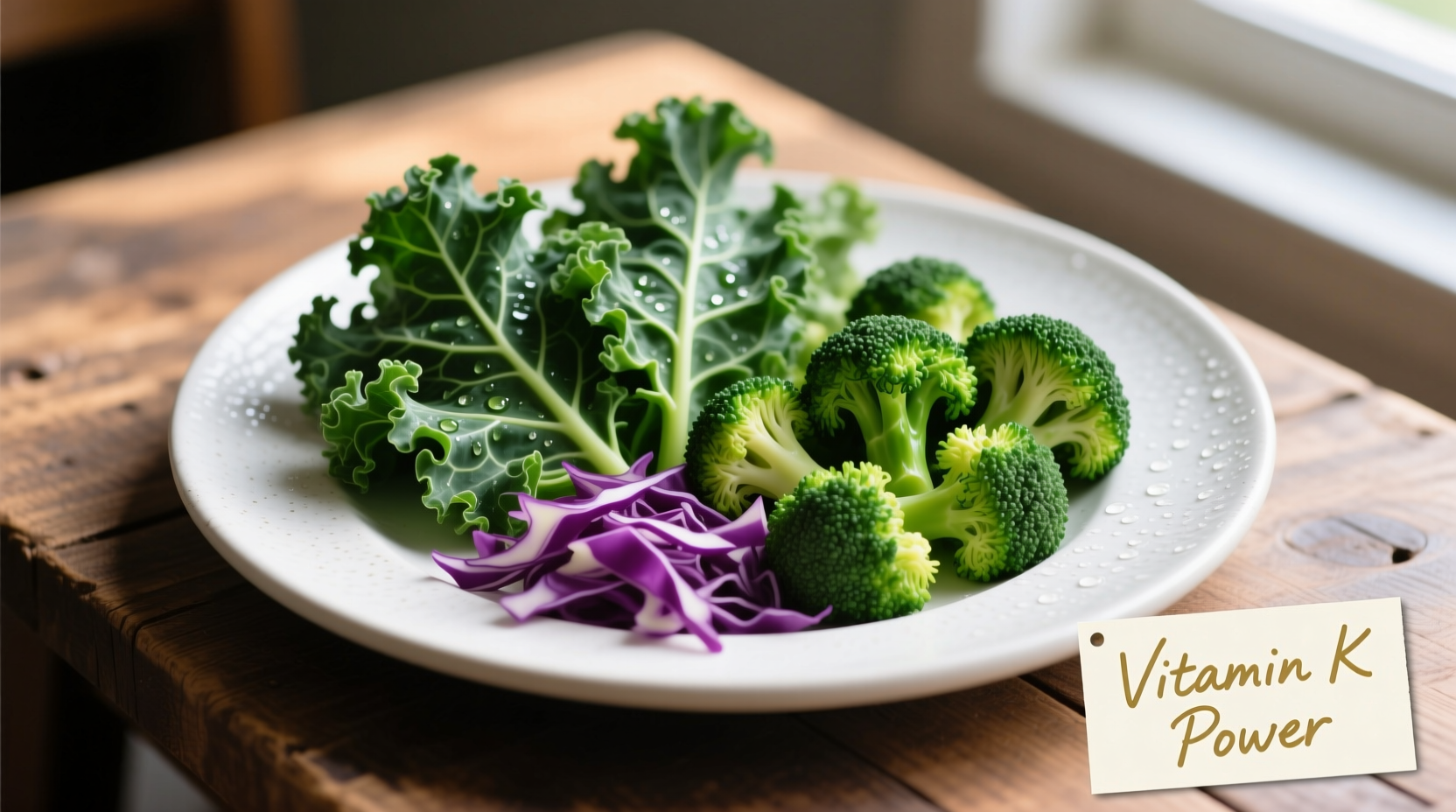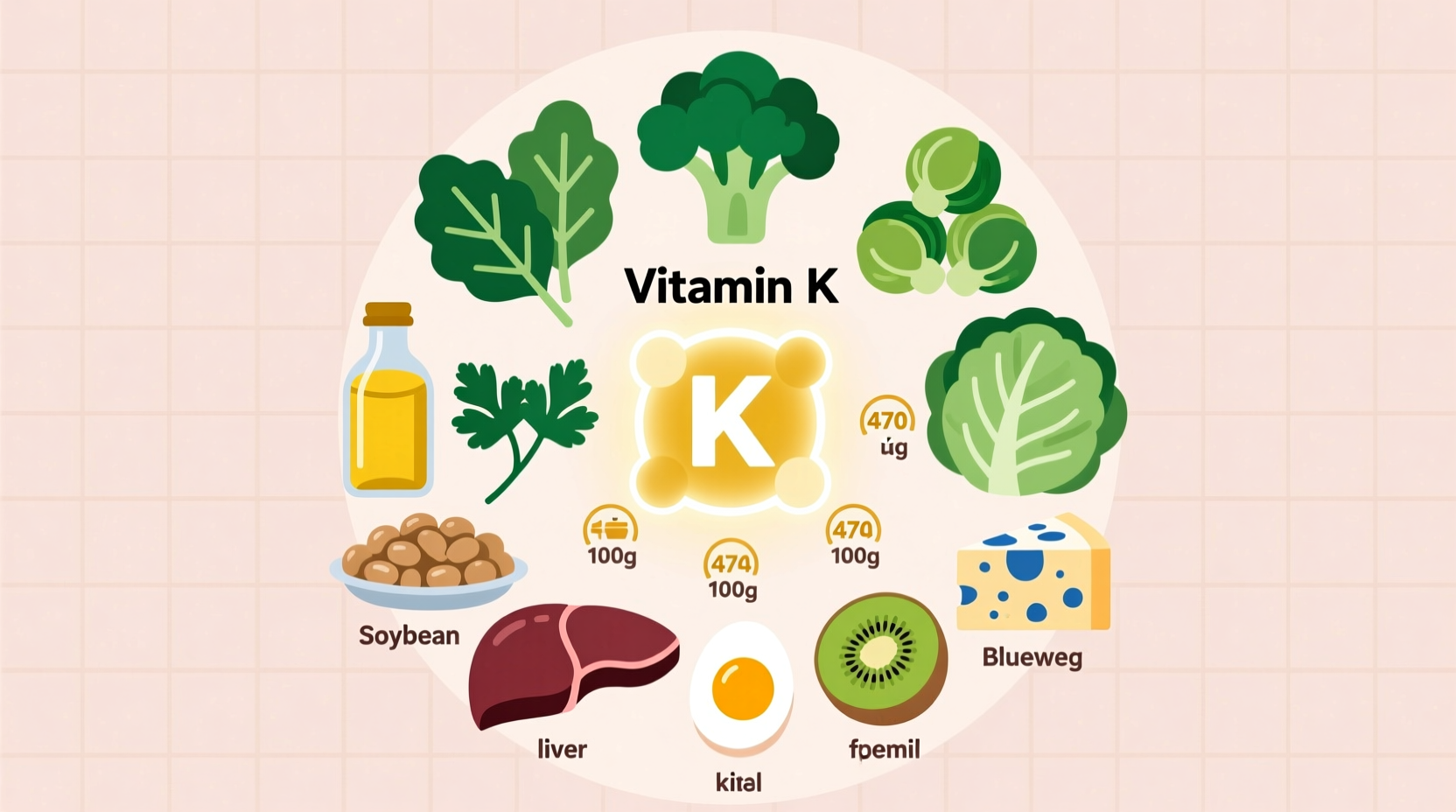Leafy green vegetables contain the highest amounts of vitamin K, particularly kale (531 mcg per cup cooked), spinach (444 mcg), and collard greens (772 mcg). Other excellent sources include broccoli, Brussels sprouts, cabbage, and fermented foods like natto (which provides vitamin K2).
Discover exactly which foods deliver the most vitamin K for optimal blood clotting and bone health. This guide provides science-backed information on vitamin K-rich foods, their specific nutrient content, and practical ways to incorporate them into your diet—essential knowledge whether you're managing blood thinners or simply optimizing your nutrition.
Why Vitamin K Matters for Your Health
Vitamin K isn't just about blood clotting—this essential nutrient plays multiple critical roles in your body. It activates proteins that regulate blood coagulation, ensuring you don't bleed excessively from minor injuries. Beyond this vital function, vitamin K contributes significantly to bone metabolism by helping calcium bind to your skeleton. Research from the National Institutes of Health shows adequate vitamin K intake correlates with reduced fracture risk and improved bone density, particularly in postmenopausal women.
What many people don't realize is that vitamin K exists in two primary forms with different food sources and functions. Vitamin K1 (phylloquinone) primarily comes from plant sources and handles blood clotting, while vitamin K2 (menaquinone) originates from animal products and fermented foods, supporting both cardiovascular and bone health. Understanding this distinction helps you build a more effective vitamin K-rich diet.

Vitamin K1 vs K2: Understanding the Difference
When searching for "what foods are in vitamin k," most people unknowingly focus only on vitamin K1 sources. However, both forms serve important functions. Vitamin K1, making up about 90% of dietary intake in Western diets, comes almost exclusively from plant sources—particularly leafy greens. Vitamin K2, though less abundant in typical diets, has longer-lasting effects in the bloodstream and appears particularly beneficial for directing calcium to bones rather than arteries.
The National Library of Medicine explains that vitamin K2 exists in multiple subtypes (MK-4 through MK-10), with natto (fermented soybeans) providing substantial MK-7. Animal products like egg yolks and certain cheeses offer MK-4. This distinction matters because different forms have varying half-lives in your body and potentially different health impacts.
Top Vitamin K-Rich Foods by Category
Knowing which specific foods contain the most vitamin K helps you make strategic dietary choices. The USDA's FoodData Central provides precise measurements that reveal surprising rankings beyond the obvious leafy greens.
| Food (1 cup cooked unless noted) | Vitamin K (mcg) | DV Percentage* |
|---|---|---|
| Collard greens | 772 | 643% |
| Kale | 531 | 443% |
| Spinach | 444 | 370% |
| Turnip greens | 426 | 355% |
| Broccoli | 220 | 183% |
| Brussels sprouts | 219 | 182% |
| Natto (3.5 oz) | 850 | 708% |
*Daily Value based on 120 mcg for adults
Maximizing Vitamin K Absorption from Foods
Vitamin K is fat-soluble, meaning your body absorbs it best when consumed with dietary fats. Simply steaming broccoli won't maximize its vitamin K benefits—pairing it with healthy fats significantly enhances absorption. Research published in the American Journal of Clinical Nutrition demonstrates that adding just 3 grams of fat to a meal increases carotenoid absorption by 2.6- to 11.2-fold, with similar principles applying to vitamin K.
Practical application: toss your spinach salad with olive oil dressing, sauté kale with avocado oil, or add sliced avocado to your green smoothies. For those following low-fat diets, consider spreading vitamin K-rich foods throughout multiple meals rather than consuming them all at once to optimize absorption.
Special Considerations for Blood Thinner Users
If you're taking warfarin or other vitamin K antagonist medications, understanding "foods high in vitamin k for blood thinners" becomes critically important. The American Heart Association emphasizes consistency over restriction—sudden increases or decreases in vitamin K intake can interfere with medication effectiveness.
Rather than avoiding vitamin K-rich foods completely, aim for consistent daily intake. Work with your healthcare provider to establish a stable pattern. For example, if you enjoy spinach, consume approximately the same amount daily rather than alternating between large portions and none at all. This stability allows your doctor to adjust medication doses appropriately.
Recognizing Vitamin K Deficiency
Vitamin K deficiency is relatively uncommon in healthy adults but can occur with certain medical conditions or prolonged antibiotic use. Key signs include easy bruising, bleeding gums, nosebleeds, and in severe cases, blood in urine or stool. Newborns are particularly vulnerable, which is why hospitals routinely administer vitamin K injections after birth.
While deficiency symptoms provide important warning signs, the more common issue for most people is suboptimal intake that doesn't cause obvious symptoms but may impact long-term bone and cardiovascular health. The Framingham Heart Study found that participants with the lowest vitamin K intake had significantly higher rates of кнопк











 浙公网安备
33010002000092号
浙公网安备
33010002000092号 浙B2-20120091-4
浙B2-20120091-4